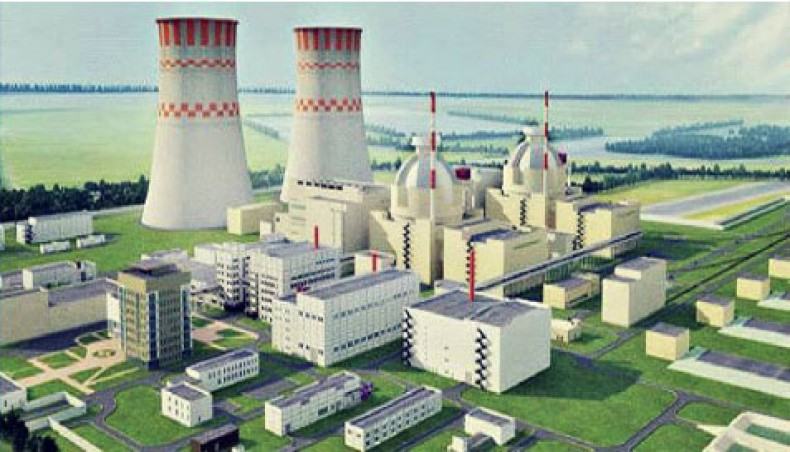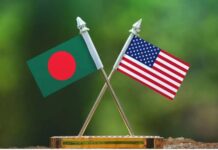Dhaka has also recently become a major grain importers among Russia’s partners. According to official data, in September of this year, Bangladesh imported about 2,45,000 tonnes of grain from Russia, which accounts to 14.5 per cent of all Russian exports, writes Dmitry Bokarev
WHILE the US is hunting for allies in the Asia-Pacific region to establish an anti-Chinese military alliance, Russia too has lost hope of finding new partners in the region. One state with which Russia has managed to establish strong ties with is Bangladesh. It shares a common border with India and Myanmar and has direct access to the Indian Ocean, which is advantageous both from an economic and a strategic point of view. In the 1970s, the USSR assisted Bangladesh in its war of independence with Pakistan, and then it helped to rebuild the country after the war. A new stage of bilateral relations between Russia and Bangladesh began in 2009, when the Awami League political party headed by Sheikh Hasina came to power. In early 2013, she paid an official visit to Russia, to discuss and sign agreements on cooperation in the field of finance and the fight against terrorism. The volume of bilateral trade between Russia and Bangladesh in recent years has almost reached $1 billion. Dhaka has become a major supplier of seafood and textiles to the Russian market, while Moscow is exporting metal industrial products and heavy machinery to Bangladesh. Among the most notable recent deals between the two countries one can mention the acquisition of a number of Russian Yak-130 advanced jet trainers for the Bangladesh Air Force. Dhaka has also recently become a major grain importers among Russia’s partners. According to official data, in September of this year, Bangladesh imported about 2,45,000 tonnes of grain from Russia, which accounts to 14.5 per cent of all Russian exports. The urge to sign such a massive deal governed by a low selling price is justified by unusually rich harvests Russia saw in 2016. However, the most significant area of cooperation between Russia and Bangladesh is nuclear energy. In the autumn of 2011, the two countries signed an agreement on the construction of the first nuclear power plant in Ruppur, a hundred miles from Dhaka. Rosatom’s sub-company NIAEP-COC was entrusted with constructing this massive power plant. The agreement that determined the time frame of the construction and the responsibilities of the parties was signed in late 2015 during Sergey Kiriyenko’s visit to Dhaka. The director of Rosatom refused to disclose the price of the contract, but according to some media reports, it exceeded $12 billion. So far, the parties agreed about the construction of two blocks, powered by Russian VVER-1200 reactors, which have been successfully operated at Novovoronezh NPP-2. Each reactor has the capacity of 1,200MW. It should be noted that particularly close attention was paid to the project’s safety, since the station will be equipped with top of the line safety systems which will fulfill the highest of international standards. Construction began in 2013. At this stage, the engineers began the construction of the site along with the creation of the necessary infrastructure. The launch of the first reactor is scheduled for 2022, the second will become fully operational in 2023. But it will take a year on the Bangladeshi side to for the two blocks to become fully operational and be exploited commercially. The funds that were necessary for the launch of this project were provided by Russia. At the beginning of 2015, Sheikh Hasina visited Russia again. During her visit, she signed a loan agreement that will provide the funds needed for pre-construction works. Russia’s government has already issued a decree according to which Dhaka is to receive a loan of $11.38 billion for the construction of the NPP. Some experts were questioning the safety of the project, since the territory of Bangladesh hosts a tropical climate and results in natural disasters like floods and storms, which often lead to cases of massive destruction of civil property and loss of life. Back in 1991, the flood caused by cyclone Marian killed 1,40,000 people. Yet another source of concern is the location of the power plant, since it is being constructed on the east bank of the Ganges River [known as the River Padma in Bangladesh] which is the main source of drinking water for the population of Bangladesh. What can safely ensure when the whole population of Bangladesh completely depends on this river. Moreover, since the better part of the 170 million people living in the country is engaged in agriculture, should the Ganges be polluted with radiation, the consequences would be horrific. Here it is worth remembering what the losses incurred in the country in the 1970s were like. One can still remember the crisis that occurred in Bangladesh when India built its notorious Farakka Barrage. Therefore, it’s not surprising that the Rappur project found ardent opponents. That is why in the summer of 2013, before construction even began, NIAEP-COC and the Bangladesh Atomic Energy Commission agreed to conduct an engineering and environmental survey to confirm the safety of the project. It is worth noting that the site for the construction was chosen back in the 1960s, when Bangladesh was still part of Pakistan. The latter, too, wanted to build a nuclear power plant in this area. Ever since then, this area has been repeatedly examined by scientists from various countries, including Germany and Switzerland, and they found that the site is safe enough for the construction of the plant. In addition, the technologies that are going to be used by Russian engineers ensures that even in the event of a natural disaster there will be no radioactive contamination. The station will be provided with extra thick concrete walls and a so-called ‘melt trap’ which in case of an accident ensures the isolation of the nuclear fuel. According to Md Ali Zulquarnain, chairman of the Bangladesh Atomic Energy Commission, the safety of Russian-built nuclear power plants is one of the primary reasons Dhaka turned to Moscow. In conclusion, one can say that the Ruppur project allowed Russia to find itself a longstanding partner in the region. It should be remembered that the operational periods of a VVER reactor is 60 years, and with proper maintenance — 80. It is noticeably longer than the life span of your average military alliance. New Eastern Outlook, October 21. Dmitry Bokarev, political observer, writes exclusively for the online magazine New Eastern Outlook. Source: New Age










